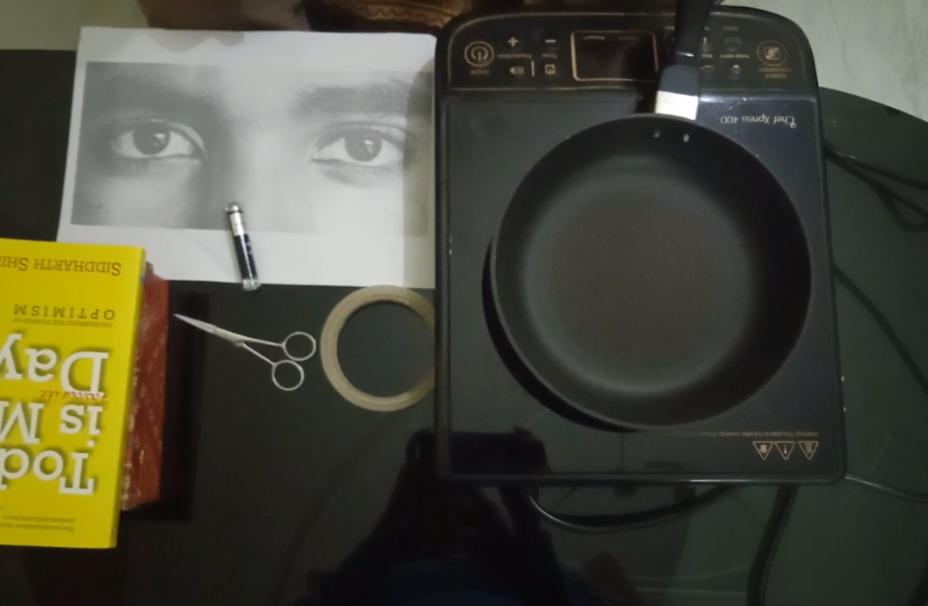Twinkle Twinkle Little Star: an Activity on Atmospheric Refraction
by shahpaul in Teachers > Science
333 Views, 2 Favorites, 0 Comments
Twinkle Twinkle Little Star: an Activity on Atmospheric Refraction


Twinkle, twinkle, little star,
How I wonder what you are!
Up above the world so high,
Like a diamond in the sky.....
We all remember how we all use to sing and love this poem. This poem was first published with the title ‘The Star’ in 1806 in Rhymes for the Nursery, a collection of poems by Jane Taylor and her sister Ann Taylor.
This poem makes kids admire stars in the night sky and also encourages some of them to even study astronomy as they grow up
But, do stars really twinkle? If not, why do they seem to twinkle? In this Instructables, we will perform an activity
to find the answers.
Supplies
- Induction Cooktop
- Induction pan
- Tape
- Scissors
- Laser pointer
- Human eyes printout on A4 sheet
- Some books
Setting Up the Experiment



- Wrap a small piece of tape around the laser pointer so that it pushes down its On button and the laser point remains in a working position.
- Place the pan over the induction cooktop. Now, stack some books beside the cooktop and rest the laser pointer on the books. Make sure that the laser’s beam passes no more than 1-2 centimeters over the induction pan's surface.
- Tape the printed image of the human eyes to the wall with the leaser pointing directly at the center of one of the eyes.
- Turn On the induction cooktop and observe the laser beam on the printout.
The Twinkling(appeared) of Star

We observe that at first the laser spot on the eye is steady. There is no flickering/wobbling of the laser spot. But as the pan gets hot, we will notice the laser spot starts to wobble and flicker.
But why the laser spot starts wobbling?
This is due to the Refraction of light. In simple terms:
"Refraction is the bending(change in direction) of a light wave as it passes from one transparent substance into another, having different density". This happens mainly because the speed of light in a rarer medium is greater than its speed in a denser medium.
But what refraction has to do with this wobbling?
Refraction is the change in direction of light(wave) passing from one medium to another caused by a change in its speed.
When air near the hot plan heats up, it becomes less dense. This density change causes the air to rise and mix with the surrounding cooler air in a process called convection. Now, due to refraction light passes through hot air(optically rarer) more quickly than it does through the cool air(optically denser). This slight change in speed causes the light to bend as it passes through the air of varying temperatures which makes us perceive the laser spot to flicker and wobble?
But how this relates to the twinkling of stars?
The Earth’s atmosphere is a layer of air., As light from a star races through our atmosphere, it bounces and bumps through the different layers, bending the light before you see it. Since the hot and cold layers of air keep moving, the bending of the light changes too, which causes the star’s appearance to wobble or twinkle.
Please feel free to suggest any improvement, variation, or correction to this experiment. Thank you.